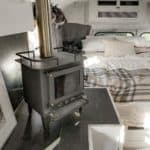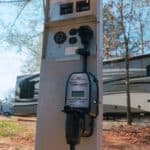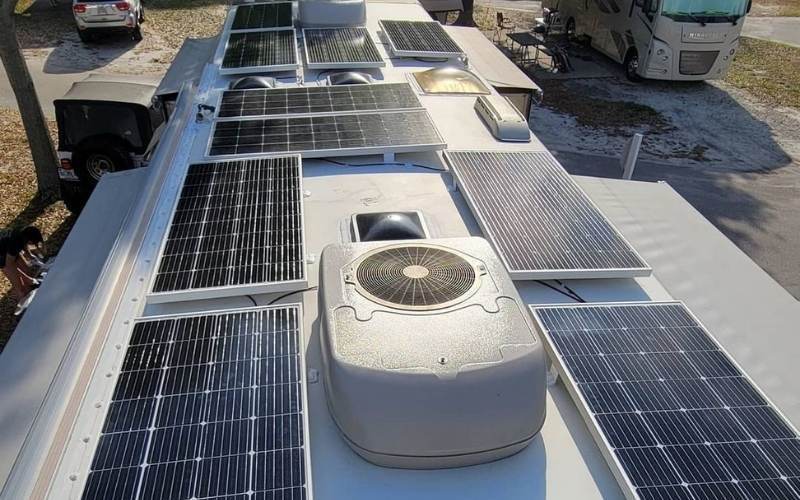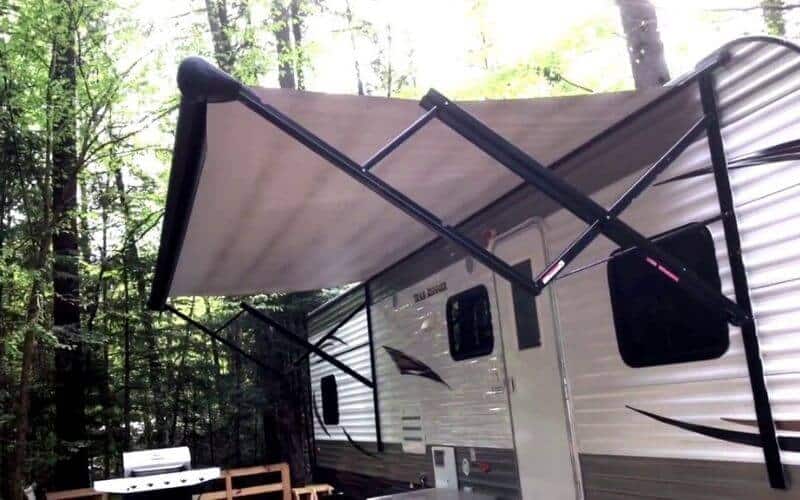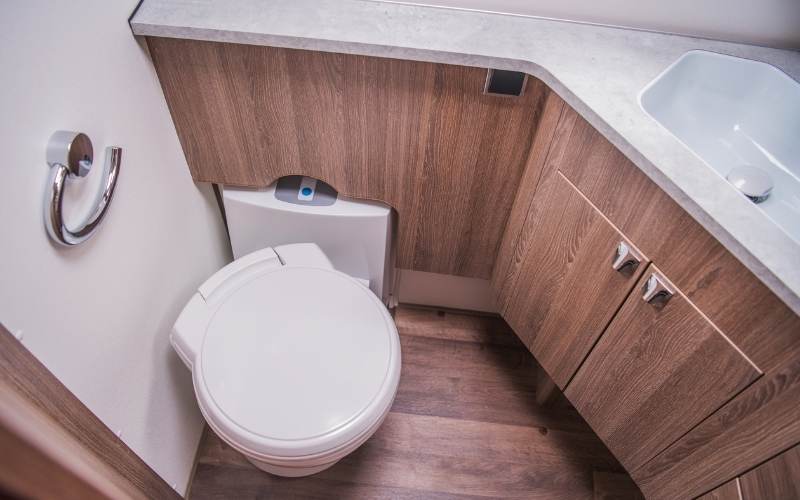Class B RVs are the smallest type of motorhome and closely resembles a cargo van.
They have recently grown in popularity, with images of pristine white Sprinter vans traversing red deserts or winding mountain roads adorning the internet.
But why are Class B RVs so expensive, and are they even worth the money?
Class B motorhomes are among the most expensive types of RVs because they have the highest cost per square foot, but they have a lot to offer. The compact design makes them versatile and accessible, while their durable build and great gas mileage allows them to retain their resale value better than other RVs on the market.
The build and features of Class B RVs are unique compared to other types of motor homes, but these unique elements come at a price.
Let’s take a closer look at what makes class B RVs so expensive and how to decide if they are worth the high cost.
What is a Class B RV?
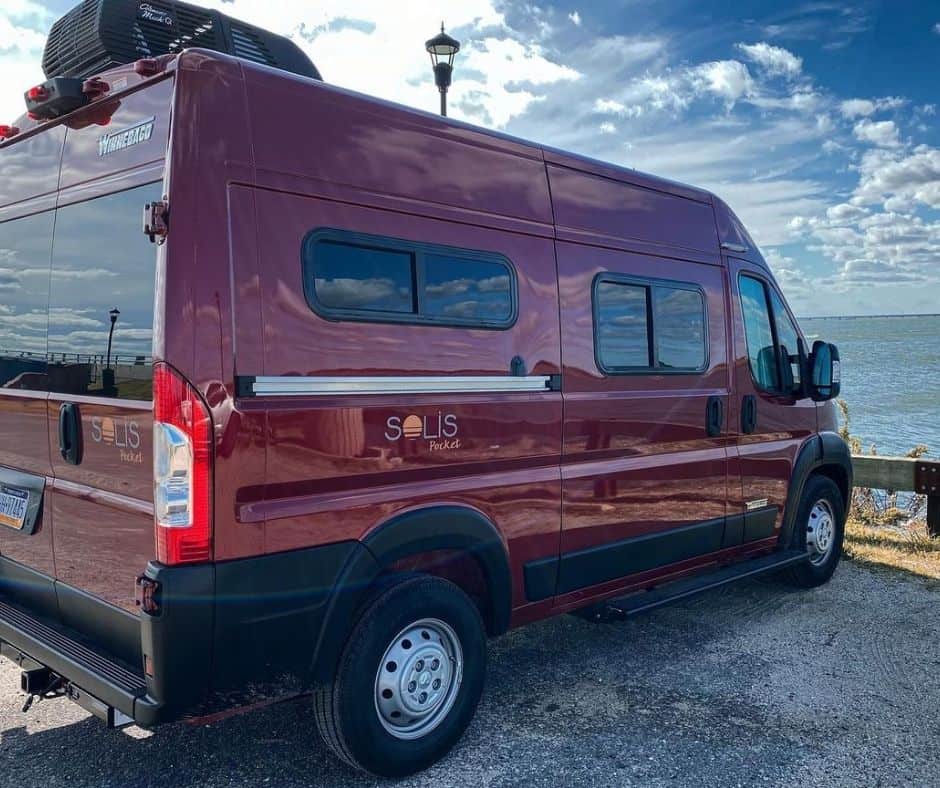
A Class B RV is one of three motorhome classifications. It is the smallest variety and resembles a cargo van.
Class B RVs are compact, easy to handle, and often feature the same basic amenities as other types of RVs.
Class B vans are unique in design and use. Their average size is 18-24 feet long and around 7 feet wide, making them small enough to fit into standard parking spaces.
At the same time, the compact space of Class B motorhomes often includes a surprising amount of common RV features such as:
Class B camper vans are all about efficiency and ease of travel. Although they may not leave much room for multiple people to reside in, what they lack in space, they make up for in ease of travel.
Class B RVs are easy to park and don’t require any special skills to operate.
Many are cheaper on gas than class A or C RVs and can easily fit into tight spaces, making them an ideal choice for those who enjoy boondocking on public land or exploring cities alike.
How Much Do Class B RVs Cost?
The cost of new Class B RVs can start as low as $60,000 for a basic model or as high as $300,000 for a custom build, though the average cost falls closer to $100,000.
Factors such as the size, the make of the vehicle, and the features included in the build all help in determining the final cost of the vehicle.
Both Class A and Class C RVs can easily cost just as much or more, but they also tend to be larger vehicles.
For the most concise cost comparison, it is best to consider the cost per square foot.
On average, Class B motorhomes cost around $950/ square foot, and prices are only increasing.
Class C RVs are the next closest in size with an average cost of less than $500/ square foot.
Class A RVs tend to be more expensive than both smaller varieties, though the cost per square foot can be more difficult to compare since many include up to five slides as well as amenities such as washers and dries that are commonly found in brick-and-mortar homes.
5 Reasons Why Class B Camper Vans Are So Expensive
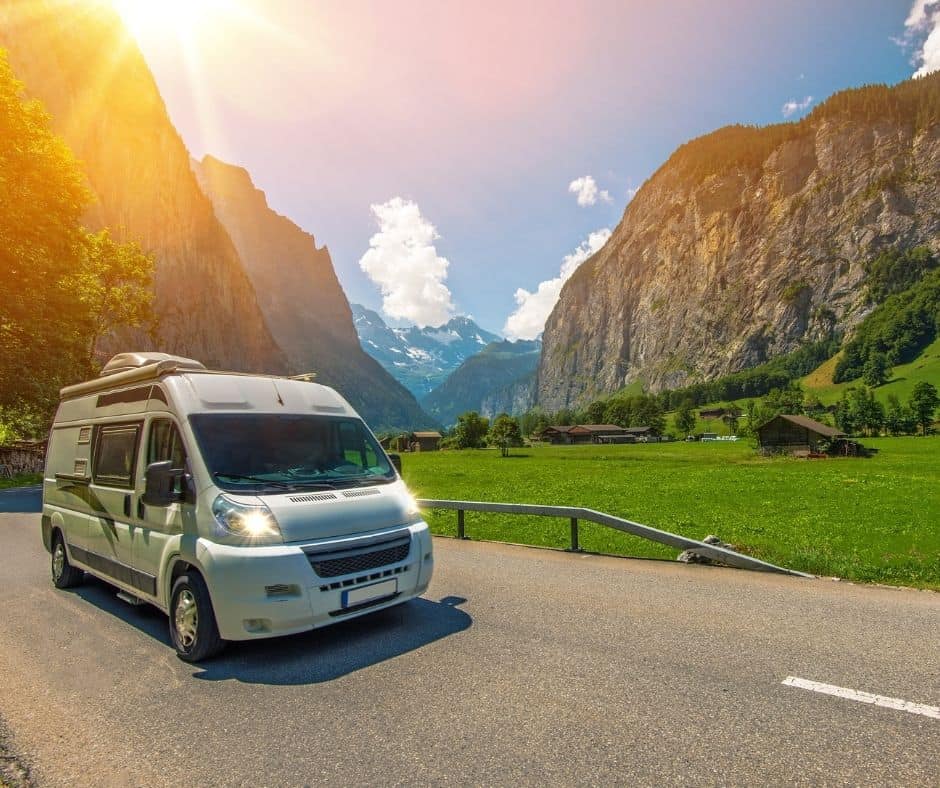
Although they may not offer the space and comforts found in other motorhomes, Class B RVs are so expensive because of their:
Let’s take a closer look at the factors that increase the cost of class B RVs.
1: Tedious Manufacturing Process
Much of what drives up the price of Class B RVs lies in how they are manufactured. With Class C and Class A motorhomes, the living space is built first, then attached to a chassis.
Keeping the living space separate from the vehicle makes it easy to build in a sequence that allows manufacturers adequate access throughout the process.
On the other hand, Class B camper vans are built into a van chassis. This means that all aspects of the living space, including electrical wiring and furnishing, must be fit into the pre-built frame.
This limits the type of tools and machinery that manufacturers can use to outfit the RV, and the overall process becomes more time consuming and tedious.
The way in which the vehicles are manufactured also makes a difference in the standards by which they are safety tested.
Since Class A and Class C motorhomes are built in two parts, only the chassis is tested under automotive standards, while the living space itself is never crash tested.
This is one of the reasons why passengers should never ride in the coach during travel.
In contrast, the living space of Class B RVs is built directly into the vehicle, requiring the entire rig to be tested to adhere to automotive standards upon the completion of the build.
Although a necessary measure, testing the entire vehicle adds to the final cost of the vehicle’s manufacturing process.
2: Spike in Popularity
Road travel has seen a significant increase in recent years, and Class B RVs are some of the most desired vessels.
This spike in popularity is due to increased publicity through social media as well as some major world events.
The road travel lifestyle got a new face after the birth of the #vanlife movement in the early 2010’s and it hasn’t slowed down.
Between the rising costs of housing, student debt, and a growing online workspace, the Instagram hashtag inspired a new generation to seek alternative living and travel options.
The 2018 North American Camping Report released by KOA (Kampgrounds of America found that at least 14% of campers were interested in camper vans, a spike from only 8% the year before.
A second spike occurred with the onset of the Covid-19 pandemic. As air travel restrictions were put into effect, many turned to road travel instead.
Monika Geraci, senior manager of market, strategy, and operations for the RV Industry Association, reported an increase in sales from RV dealer as high as 170% in May 2020.
3: Quality of Build and Materials
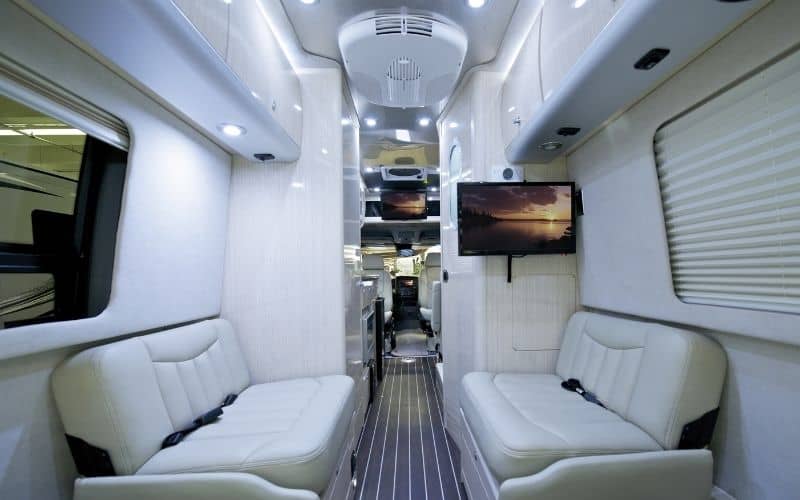
Class B RVs are made of higher-quality materials than many other motorhomes, and their solid frame makes them less prone to damage.
Higher quality materials also increase the safety of the vehicle, something that is increasingly taken into consideration, especially for those traveling with kids.
Class B RVs come in many shapes and sizes, but the #vanlife movement has glamourized several models, particularly Ford Transit and Mercedes Sprinter vans.
While these brand names alone increase the cost, they also manufacture a much higher-quality chassis than is found in other motorhomes.
Many new models may also come with some big-ticket items such as solar panels and exterior storage racks.
4: Class B RVs Are Easier To Drive, Park, And Store
Camper vans were popular in the 1960’s and 70’s, but RV road travel has more recently been dominated by Class A motorhomes and towable fifth-wheel trailers.
Large and possibly intimidating to maneuver, these bulky RVs were often reserved for retired couples and rock stars.
But as class B RVs rose in popularity, many younger people embraced a more minimal lifestyle in exchange for greater experiences and a cheaper cost of living.
The small frame of class B camper vans makes the learning curve much smaller than that of larger RVs.
They drive just like any other van and can easily fit in the narrow lanes and parking spaces of city limits.
With a more economic gas consumption than larger vehicles, class B RVs are the optimal size for couples and single travelers.
5: Supply Chain Hang-ups
The Covid-19 pandemic led to a major disruption of supply chains around the world.
Much international shipping was halted or delayed, which led to a shortage of supplies across industries, including vehicle manufacturing.
Although many manufacturers adjusted some fine details to keep production moving, but the overall rate of production still took a toll.
With a spike in popularity and a slowing in production, the balance of the supply and demand of class B RVs significantly shifted, as did the cost of the new vehicles that did make it to the market.
The production of many vehicles was delayed upwards of 8 months due to supply shortages.
In turn, dealers were experiencing 20 or even 30% increasing in pricing, making it difficult to stay in business while adhering to prices that buyers “locked-in” before the magnitude of the shortage was realized.
As the pandemic lingers and productions remains slow, RV prices on all types of models are projected to continue rising in the coming year.
Production is anticipated to continue at a slowed rate, and brands like Airstream, Grand Design, and Winnebago plan to raise prices by 6.5-8%.
Ways to Save Money When Buying a Class B RV
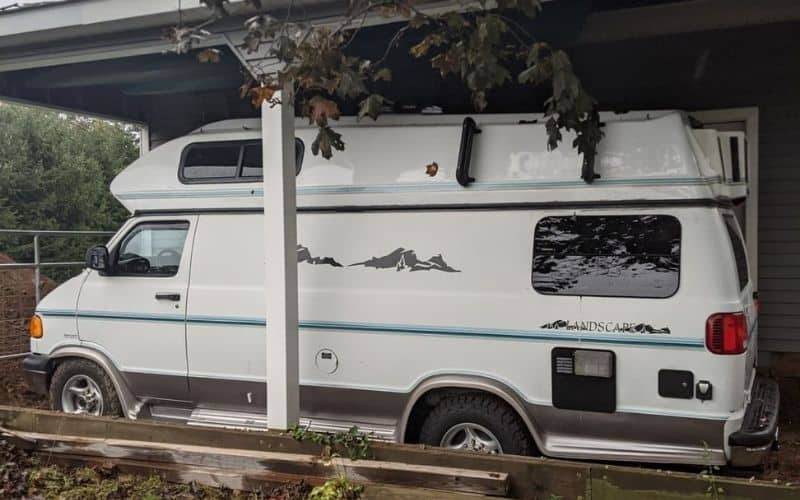
Even though Class B motorhomes can be on the higher end of the RV price spectrum, there are ways to save money when shopping for one.
Instead of buying a brand-new vehicle, consider the following options instead:
Being thrifty and knowledgeable about your RV shopping is a great way to save money without compromising on the type of vehicle and features that you want.
Buy Used
While it may be tempting to shop for a new RV, it is not always a feasible option.
New vehicles generally cost over $100,000, and a shortage of supply is making them harder than ever to find.
Instead of shopping for a new class B RV through a manufacturer, consider buying a used vehicle instead.
Buying used can reduce the cost of the vehicle, expedite the shopping process, and will likely present a greater selection of vehicles to choose from.
Build-out a Van
As the road travel community grows, so do the resources on how to build-out your own van.
Although this option does require more effort and may not make the process of acquiring a finished product any faster, it comes with several perks.
Building or remodeling a van opens up a variety of options that you may not have when buying new.
Not only can it reduce the overall cost, but it can help you be more choosey in your set up.
Some opt for remodeling vintage VW buses, while others purchase a much cheaper van chassis and then rebuild it to create a comfortable living arrangement.
Know What You Want
The features we deem necessary vary depending on how we travel.
Those who prefer boondocking in remote locations may prefer a 4WD vehicle and solar panels, whereas those who camp at campgrounds may not need to spend the extra money.
Understanding what you want can help you avoid paying for unnecessary additional features to save money in the final cost.
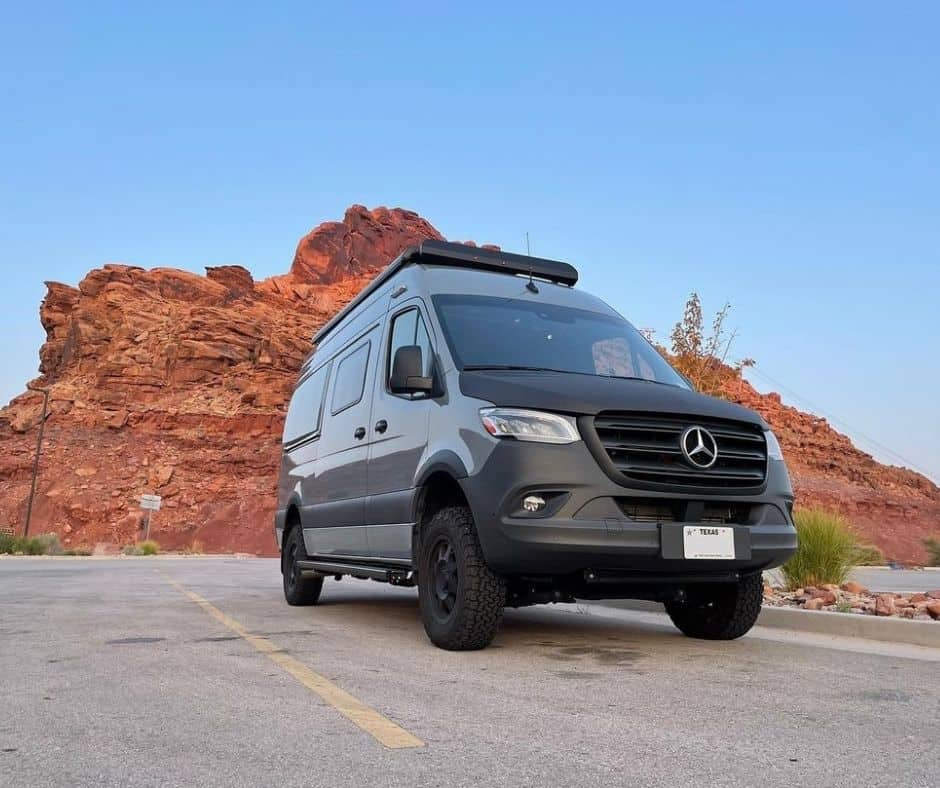
Are Class B RVs Worth the Money?
Whether a class B RV is worth the money depends on a number of factors that include:
While Class B RVs tend to be the most expensive type of RV per square foot, there are many ways to find more affordable vehicles.
Their compact size and the ease of travel it affords are also unique to RVs, making class B RVs one of the most popular and desired travel vehicles on the market.


